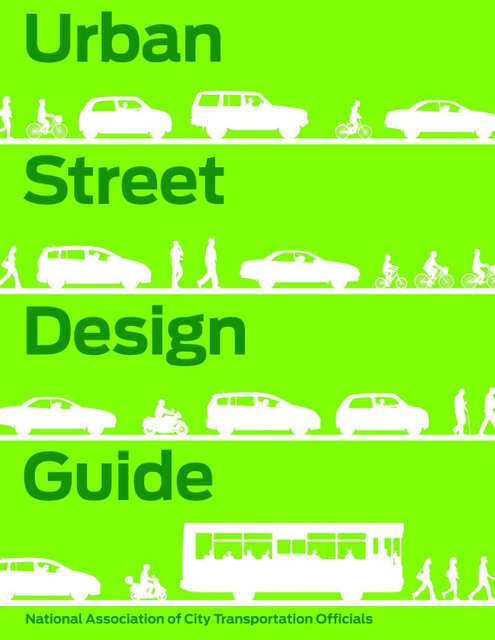
Available for pre-order before the official release in October from Island Press, the Urban Street Design Guide by the National Association of Transportation Officials (NACTO) aims to create a new DNA for city streets. In the forward by Janette Sadik-Khan, the New York City Commissioner of the Department of Transportation writes “This design guide is part of a growing movement among cities, from New York to San Francisco, and from Chicago to Houston. Together we’re working to build sustainable streets that will carry us into the 21st Century.”
Together with the Urban Bikeway Design Guide, released in 2011 and New York City’s Street Design Manual from 2009, Sadik-Khan believes “these publications are already changing the game, pulling away from a bias towards highway designs that simply don’t meet the complex needs of cities.”
The book outlines five key principles:
- Streets are public spaces. Streets play a much larger role in the public life of cities and communities than just thoroughfares for traffic.
- Great streets are great for business. Well-designed streets generate higher revenues for businesses and higher values for homeowners.
- Design for safety. Traffic engineers can and should design streets where people walking, parking, shopping, bicycling, working, and driving can cross paths safely.
- Streets can be changed. Transportation engineers can work flexibly within the building envelope of a street. Many city streets were created in a different era and need to be reconfigured to meet new needs.
- Act now! Implement projects quickly using temporary materials to help inform public decision making.
Urban Street Design Guide addresses urban spaces at a variety of scales from downtown thoroughfare to transit corridors to neighborhood Main Street and gives suggestions for interim redesigns which allow the city to test and adjust. Other non-standard, but forward thinking typologies that are included are green alleys, commercial alleys and residential and commercial shared streets. The book includes case studies from New York City, Los Angeles and San Francisco, and takes a deep dive into street design elements, intersection design and designing for safety.
You can pre-order this book on Amazon.





